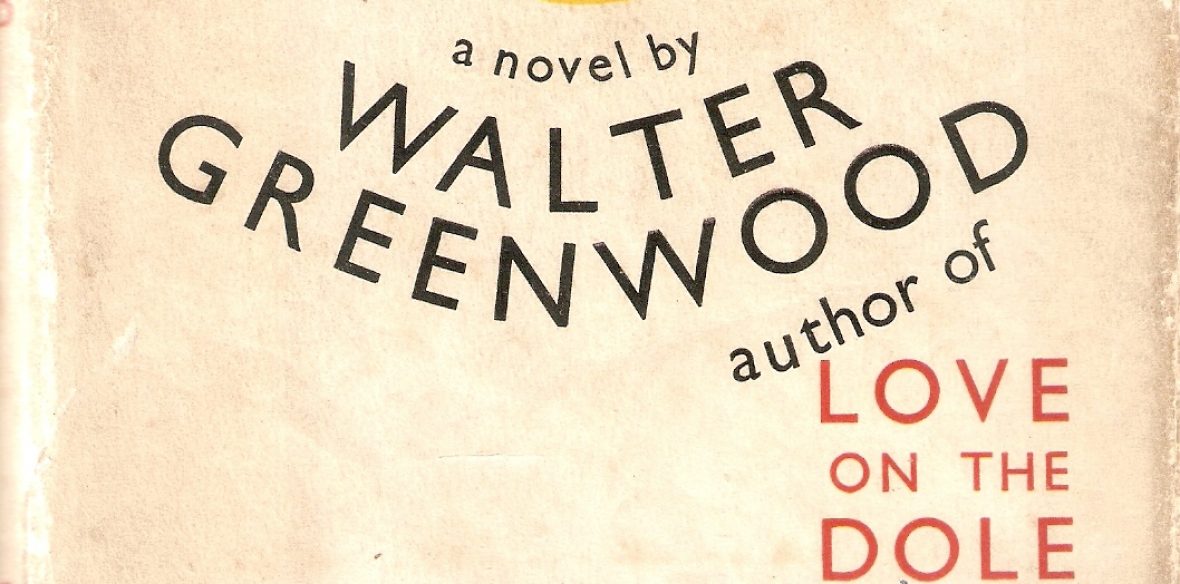Greenwood is so much associated with unemployment and the nineteen-thirties that his subsequent work, and indeed his views on later events have been very much forgotten. But he lived on until 1974 and he continued to write in various genres, and to comment on the contemporary world. Even I, though, was quite surprised to see him referring to Delta bombers. I have recently begun buying theatre programmes from productions of Greenwood’s plays and had the opportunity to buy a programme from the premiere of Love on the Dole, the musical, which was first performed at the Nottingham Playhouse on 21 July, 1970. This adaptation was made by Terry Hughes (who wrote the ‘book’), Alan Fluck (who wrote the music) and Robert Gray (who wrote the song lyrics). The production was directed by Gillian Lynne. Greenwood was not directly involved in this adaptation, but had agreed to it, and was clearly very happy to see his work remembered, adapted and staged.
The content of theatre programmes is very variable – it can be just a cast-list, actor biographies and some adverts, or can include also commentaries or an introduction to the work performed. When the programme arrived, I was pleased to see that Nottingham Playhouse had invited Greenwood to contribute a foreword of about 400 words. It was a piece of writing by Greenwood from the seventies I had never seen before and I was pleased to see that it showed him contextualising his original work and comparing its possible significance for past and contemporary audiences. Here is the complete Foreword as printed in the programme (1):

Greenwood starts by acknowledging that there has been a ‘social revolution’ since the thirties, and presumably particularly since the post-war social settlement of 1945. Sally Hardcastle’s grandchildren would very likely have had the chance to go to university (to an extent this has become true, though of course inequality of access to higher education for working-class people and obstacles to social mobility have remained firmly in place even since the nineteen-sixties, with some periods of improvement and some of decline). Sally is identified concisely here as a champion of social progress, as indeed her conversations with Larry Meath before his death suggest in both novel and play. The Depression and the National Government responses to it (especially its unwillingness to defy the ‘international bankers’ and take any unorthodox economic or social action to address the unemployment of the thirties) are seen as essential components both of the history of the nineteen-thirties and as leading to a quite wide post-war consensus to put something better in place. The question about stocks and shares ownership was asked as part of the Means Test and, of course, Greenwood here quotes it without comment in silent mockery of its absurdity for those likely to have been asked it. Greenwood acknowledges that these experiences are from the past (and I think he does assume that these issues are for the present done with, a reasonable assumption in 1970, given that unemployment, at least, remained low for the first half of that decade and that Britain seemed in many ways prosperous).
However, in the place of unemployment and deprivation is another enormous danger, which oppresses the current generation instead, and forms the new and equivalent ‘blasphemous mockery’ of true human life: the constant threat of nuclear war. This is where the Delta bombers enter into Greenwood’s foreword and show him very much following current news. Delta bombers were more commonly known as V-bombers in Britain, but in both cases the name derived from the triangular wing shape of these post-war jet bombers (one name sees the wings as like a V, the other sees them as like the capital Greek letter delta: Δ). These V-bombers (the three types were named Valiant, Vulcan, and Victor) stemmed from a government / RAF specification dating back to 1946. The aircraft were always intended to carry a British nuclear deterrent and did so between 1956 and 1970. (2) But Greenwood is right also to name the Polaris nuclear-armed submarine in his vision of apocalypse from sky and sea: from 1968 the Navy was taking over the British nuclear deterrent role with the Polaris missile, but for a short period up until 1970 both planes and submarines might carry strategic nuclear weapons. (3)

Vulcan Bomber (4)
It may be that Greenwood felt that the nuclear threat is what will be most on the minds of his audience, or it may be that it was much on his own mind. Either way, he clearly feels in this piece that if one large issue has apparently been overcome, another has succeeded it and that these overwhelming threats to ordinary lives will allow continued understanding of the situations in Love on the Dole. Finally, the foreword ends on a humanistic rather than historical note by arguing that the musical version will especially help share human feelings and values. The musical adaptation in this production was indeed well-liked in reviews, but I will write more about that in a future piece devoted to the musical of Love on the Dole.
Nottingham Playhouse Programme 1979 cover featuring a detail from L.S Lowry’s painting, Coming from the Mill, 1930 (Salford Art Museum). The painting was also the basis for the cover of the German translation of Love on the Dole. See: Walter Greenwood’s Dust-wrappers and Covers

Note 1. The programme is unpaginated, but the foreword is on the fourth page. I have still not located any extant copyright holder for Greenwood’s writings, but would be pleased to have any information.
Note 2. I have drawn here on the informative Wikipedia article on the V Bombers: https://en.wikipedia.org/wiki/V_bomber
Note 3. The RAF Museum Cosford has examples of all three V bombers. It also hosts the National Cold War Exhibition which shows a sense of ideological and social context as well as of military technology. See: https://en.wikipedia.org/wiki/Royal_Air_Force_Museum_Cosford
Note 4. photo by Sgt David S. Nolan, USAF, 1985; in the public domain. See: https://en.wikipedia.org/wiki/Avro_Vulcan
